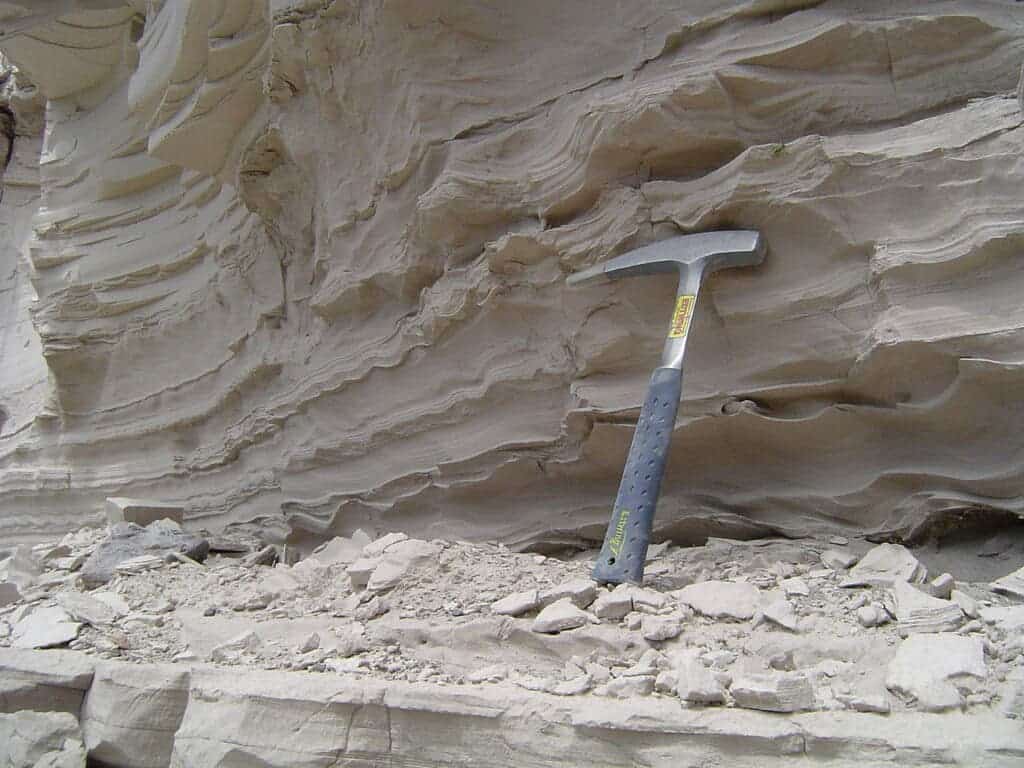
There are three types of rock on Earth: igneous, metamorphic, and sedimentary. But if you happen to see a random rock, the odds are it’s sedimentary. Around 73% of the Earth’s current land surface is covered by sedimentary rocks, and these rocks come in a great variety of shapes, sizes, and chemistries. They also shape (and are shaped by) the physical processes at the surface of our planet and are fundamental to all life on Earth.
Let’s take a dive into the world of sedimentary rocks.
Types of sedimentary rocks
The names of the main types of rocks carry important clues about how they are formed. Igneous rocks are formed through igneous processes (so they are linked to volcanic processes and magma), metamorphic rocks are formed through the metamorphosis of other rocks; and then, there are sedimentary rocks.
If you think about the word sediment, the odds are you can already start to guess how sedimentary rocks form. Sediment is naturally occurring material that’s broken down by weathering and erosion. Sediment is commonly used to refer to a collection of small particles that are transported by wind, water, ice, or gravity.
Sedimentary rocks are often formed from the compaction and cementation of sediment, but that’s not the only type of sedimentary rock. They can also form through chemical reactions, fossilization, and even from the cementation of volcanic ash. Unlike other types of rock, which usually form deep underground, sedimentary rocks can form at the surface or relatively close to the surface.
There are several ways to group sedimentary rocks, based on how they formed, what minerals they contain, or other relevant characteristics.
Types of sedimentary rocks based on the mechanisms responsible for their formation:
- Clastic sedimentary rocks are composed of rock fragments (called clasts) that have been cemented together. Most commonly, these fragments are quartz, feldspar, clay minerals, or mica, but pretty much any type of mineral can be present in this type of rock. Think of it this way: the clasts are broken or weathered pieces of other types of rocks. They end up close to each other, often in sediment, and when the sediment is cemented, it also grabs the clasts. A common example of how such rocks can form is in a river that washes away grains from other rocks, and then the river sediment consolidates into a matrix that includes these clasts.

- Biogenic sedimentary rocks are formed from animal and plant remains. Most often, these include the remains of marine creatures that have carbonate-based skeletons (like corals or shells), but they can also form from other types of remains (coal is a notable example, resulting from plant remains). Most types of limestone are formed from the skeletons of organisms.
- Chemical sedimentary rocks form by the precipitation of minerals from water. If you were to would put table salt (a mineral) into water, it dissolves. But if you evaporate the water, the mineral will precipitate again — this is why some chemical sedimentary rocks (like calcite or gypsum) are also called evaporites. Another way to precipitate minerals from water is by changing the temperature or the acidity of water, which is how some limestones form. For instance, when cold seawater heats up, calcium carbonate precipitates and can form limestone.
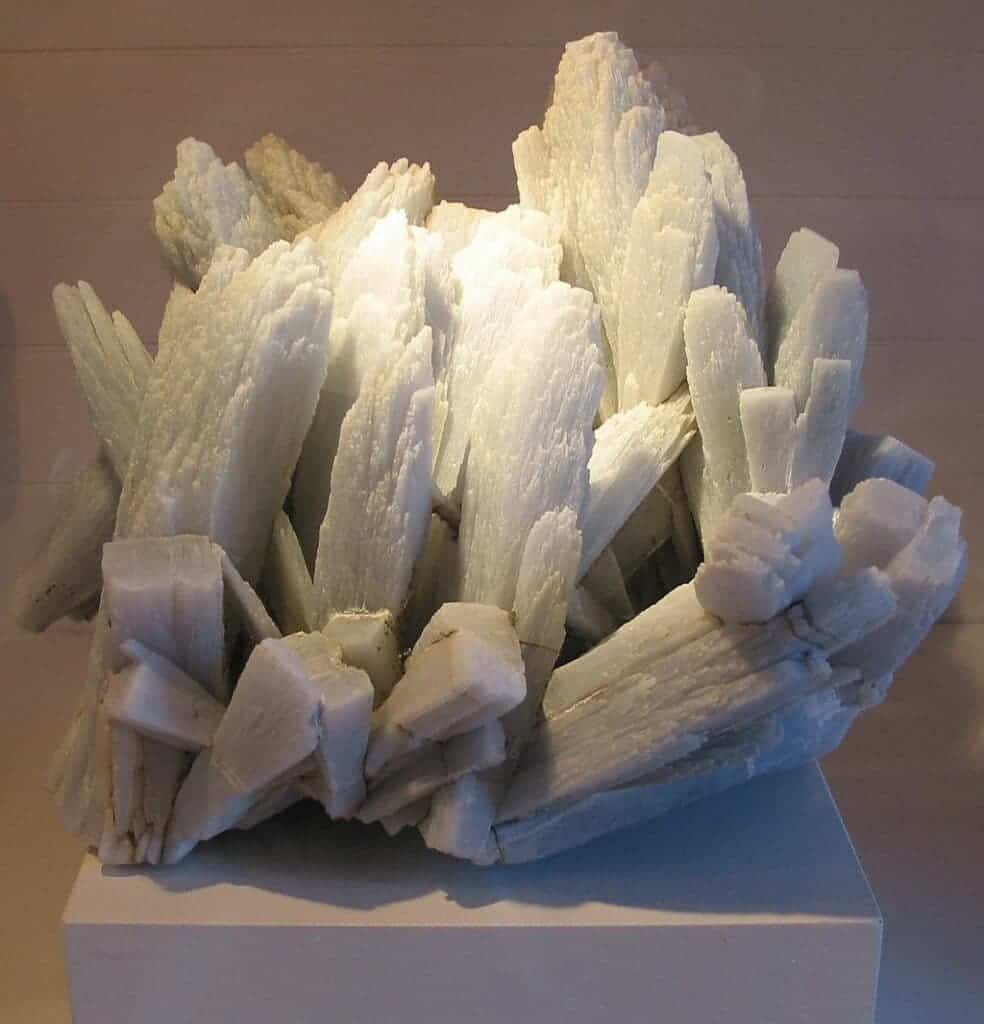
- Other sedimentary rocks — because the formation mechanisms are so diverse, geologists also use an “other” category. This category includes things like volcanic tuffs (a type of rock made of consolidated volcanic ash) and rocks formed after impact events.
This is just one of the many classifications used for sedimentary rocks. If we wanted to go through all of them, it would take a really long time and defeat the purpose (plus, geologists don’t always agree on the best ways to classify them either). Other common classifications refer to the particle size, their texture (whether the particles they contain are rounded or angular), whether or not they are stratified, and so on.
We’ll mention only one other classification type, one that’s based on their chemistry, and fairly straightforward:
- Siliciclastic sedimentary rocks are primarily composed of silicate minerals. Subcategories of these rocks are sandstone, mudrocks, and breccias.
- Carbonate sedimentary rocks are composed of minerals based on calcium carbonate (minerals such as calcite, aragonite, or dolomite).
- Evaporite sedimentary rocks (which we’ve mentioned already) are formed through the evaporation of water. Examples include halite, gypsum, and anhydrite.
- Organic-rich sedimentary rocks contain more than 3% organic carbon. Coal and shale are common examples.
- Iron-rich sedimentary rocks are, once again, self-explanatory: they contain over 15% iron. The most common examples are banded iron formations.
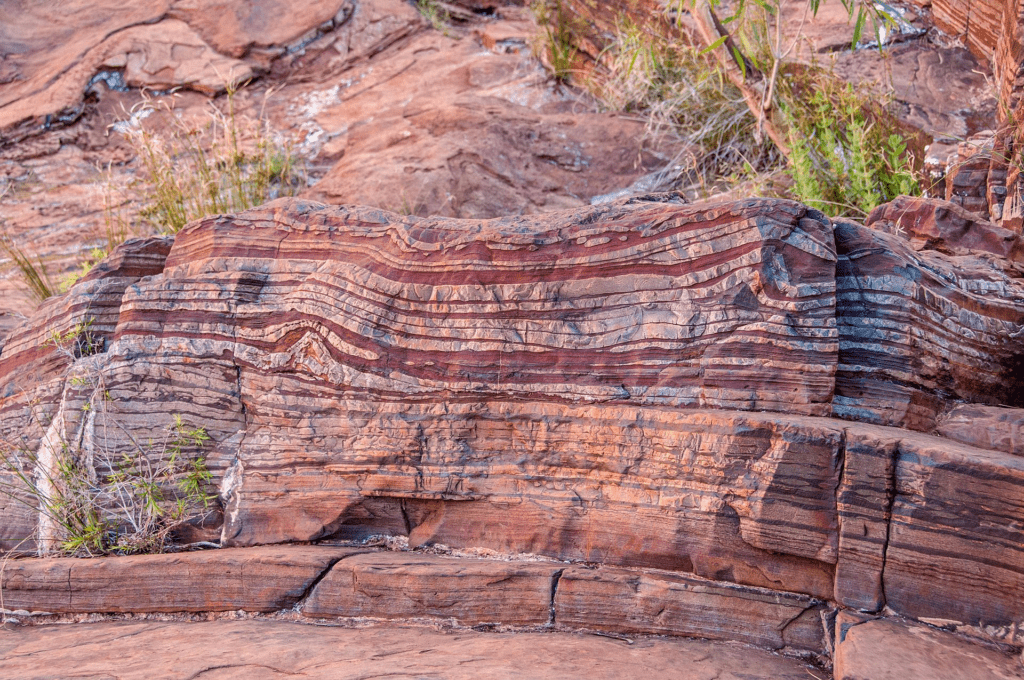
- Siliceous sedimentary rocks are almost entirely made of silica. Examples include chert, opal, or chalcedony.
- Phosphatic sedimentary rocks (once again, self-explanatory) contain a lot of phosphorus, over 6.5% usually. Examples include phosphatic mudrocks.
Depending on your interest and focus, there are multiple classifications that can be used — and are used in practice. It would take a long book to go through all of these (and indeed, there are plenty of books on this), but diving into that would defeat the purpose here. Instead, we’ll focus on the principle and processes that direct sedimentary rock formation and evolution.
Sedimentary processes
There are five main processes that direct the formation and evolution of sedimentary rocks (because sometimes, sedimentary rocks can evolve to be different sedimentary rocks).
The first process is weathering. Weathering is an umbrella term that includes several processes caused by water, ice, acids, plants, changes in temperature — anything that transforms rocks or minerals into smaller fragments or dissolves them or, you know, weathers them in any way is included here.
The second process is erosion. In common language, we sometimes refer to erosion as a type of weathering, or even use the two terms interchangeably, but there’s a key difference: erosion implies movement, while weathering does not. So erosion implies that the materials are transported by natural forces like wind or water.
This is a great introduction for the next process: transportation. Whether it’s simply sliding down a slope, falling down a cliff, or being carried away by streams, rivers, or ocean currents, transportation plays an essential role in the formation and evolution of sedimentary rocks. Furthermore, this process also leaves clues in the final rock — clues that geologists can use to study the rock’s origin. For instance, a rock that was transported by water would be more likely to be rounded.

So far, we’ve spoken about sediment and degrading existing rocks — so let’s talk about formation. In order for sedimentary rocks to form, deposition is also required. When the sediment reaches a point where it’s left in place and no longer moved around, that’s its point of deposition.
Lastly, the process that turns sediment into sedimentary rock is called lithification (or diagenesis). This is a complex process that starts with compaction — as the sediment gets buried, it gets pushed down by more and more weight, pushing the grains closer together and reducing pore space. This leads to cementation, when different particles start to bind together. Depth is a key parameter here, as it influences what the resulting rock will be like. But if the rocks get buried too deeply, they will no longer be sedimentary, but metamorphic.
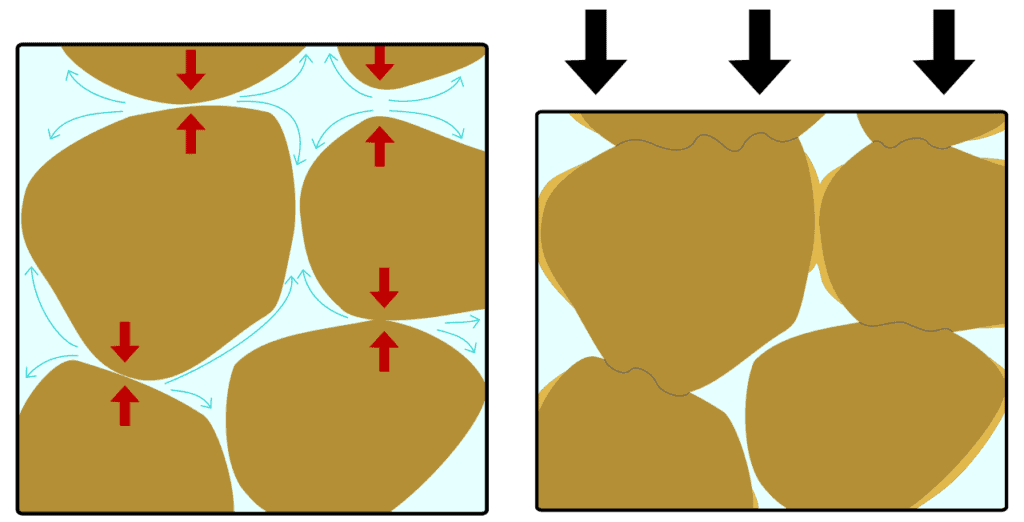
If all this sounds a bit complicated, here’s the main principle behind sedimentary rocks: these rocks are formed by the breakdown and reformation of pre-existing rocks (which may be of igneous, metamorphic, or sedimentary origin). While some exceptions exist, that’s the core of the process.
However, we haven’t mentioned a key process for sedimentary rocks, one that’s not related to the rocks themselves, but rather to the structures in which they’re found: stratification.
Stratification (or layering) explains why sedimentary rocks often (but not always) appear as layers one on top of each other (like layers on a cake). Sedimentary rocks are deposited in layers as strata, forming a structure called bedding, and large-scale bedding structures are called sedimentary basins.
Another process that we haven’t mentioned is fossilization. Sometimes, fossils emerge as individual formations, as is the case in the first image below. But other times, fossilization and sedimentary processes can form large-scale features, even hills and mountains.
Fossils generally form when the body of an organism (especially hard parts of the body) gets buried within the sediment. This sediment preserves the original structure and changes its chemistry, turning it into rock.

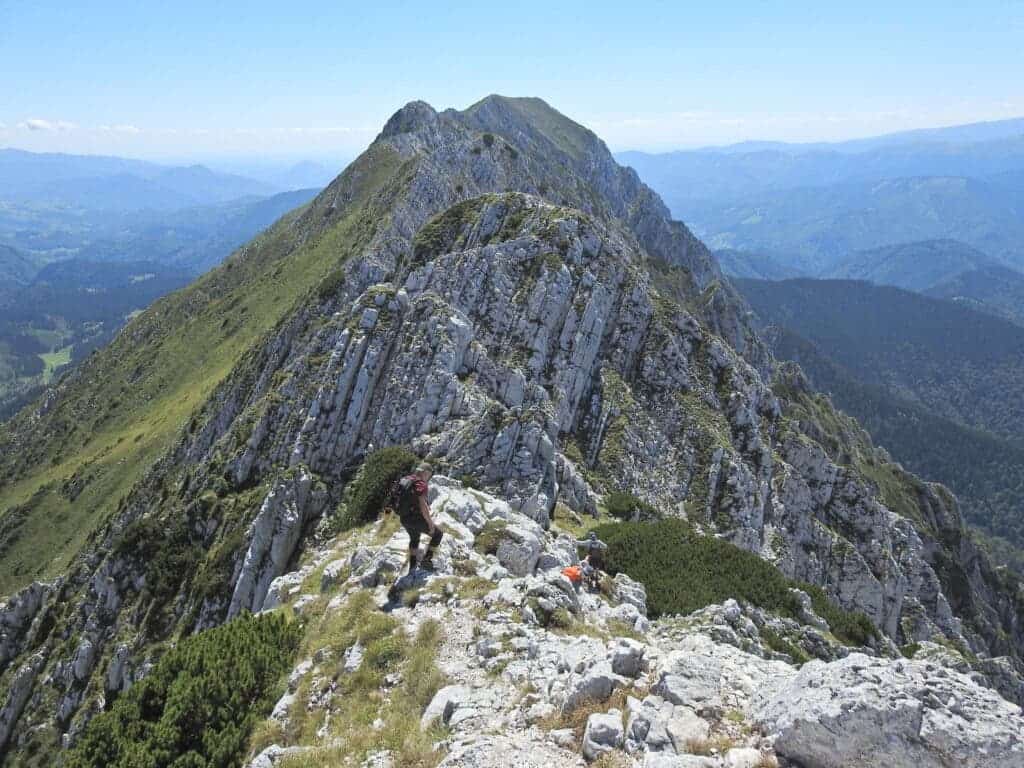
Common sedimentary rocks
There’s a vast abundance of sedimentary rocks in the world. But if you do ever pick a sedimentary rock and look at it, the odds are it’ll be one of the following ones:
Sandstone
Sandstone, as the name implies, is a rock made of sand. Quartz is usually the dominant mineral in sandstones, and sandstones are often formed as a result of the accumulation of sand in rivers and along ocean shores.
Limestone
Limestone is one of the most common sedimentary rocks. Oftentimes, it is biological in nature, originating from the fossilized bodies of organisms ranging from corals to microscopic foraminifera. The fossilized remains are either preserved in the rock or recrystallized.
Banded iron formation
Banded iron formations are distinctive, finely layered sedimentary rocks composed of alternating iron-poor chert (a form of quartz) and iron oxide bands.
Coal
Coal is another organic rock, except this time, it’s made from the remains of plant matter. Coal requires very specific conditions to form: lush, tropical settings, and a deposition in the absence of oxygen.
Shale
Shales are mudrocks that exhibit lamination or fissility. Basically, shale is a mudstone that breaks into thin flat fragments. Shales are mostly made up of clay and silt deposited in ‘quiet’ environments with slow-moving water.
Tuff
Tuff, sometimes regarded as a volcanic rock, is a light and porous rock formed through the consolidation and cementation of volcanic ash and/or volcanic dust.
Conglomerate / Breccia
A conglomerate is a rock that contains an abundance of large grains in a matrix of finer-grained sediments. A breccia is similar to a conglomerate, but in a conglomerate, the rock fragments are rounded whereas in a breccia, they are more angular.
Sedimentary rocks on Earth and beyond
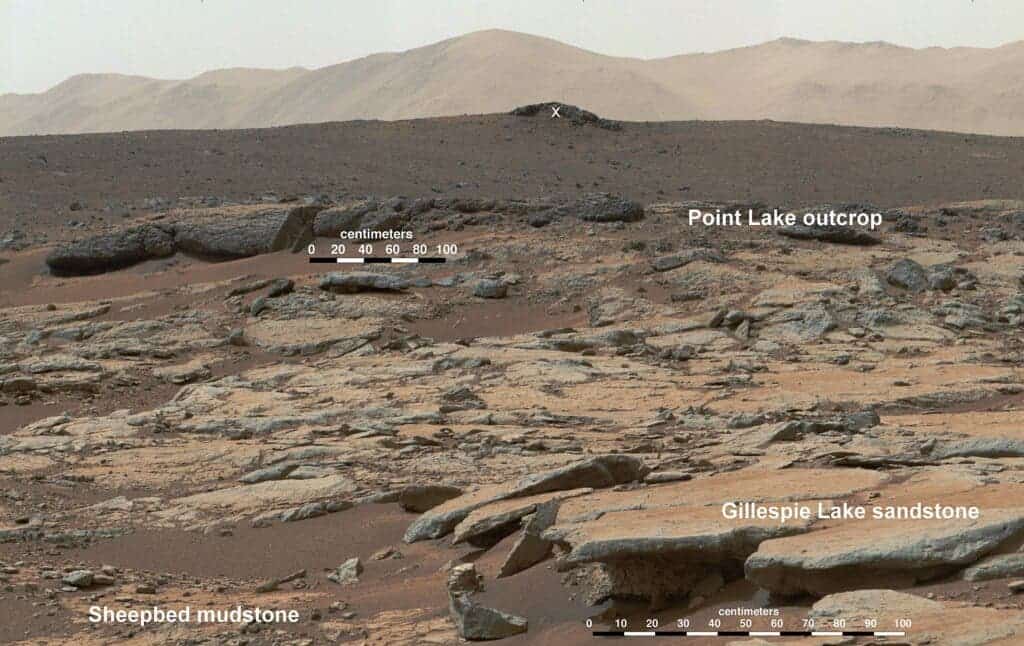
Sedimentary rocks don’t just exist on Earth, they exist on many other bodies as well. For instance, sedimentary rocks on mars (sandstones, mudstones, and claystones) give a strong indication of a former water-rich environment.
A wide variety of other sedimentological features are also present locally on Mars, as a result of this water activity.
Meanwhile, on Venus, the geology is almost entirely volcanic in nature, but there are a few tuffs here and there. Similarly, the moon has no real sedimentary structures — but other satellites may do.
Frozen moons like Europa or Enceladus may well have sedimentary rocks beneath the frozen surface, but we’ve yet to confirm this. Still, there’s a good chance that anywhere where there’s water and wind, there are sedimentary rocks.


